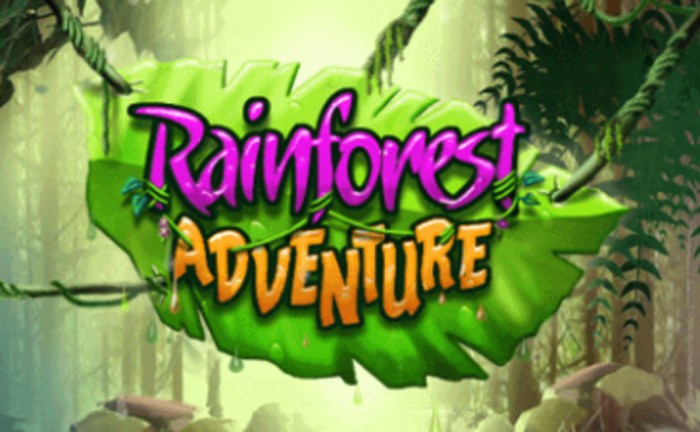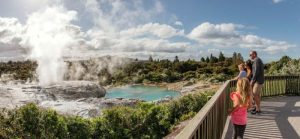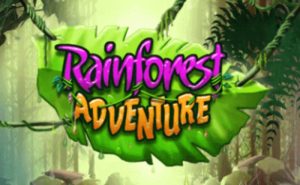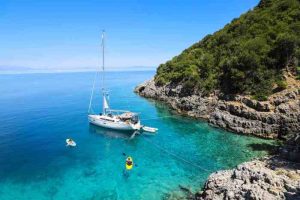
Rainforest adventure holidays offer an unparalleled escape into the heart of lush, vibrant ecosystems. Imagine traversing breathtaking canopies on zip lines, trekking through ancient forests teeming with wildlife, and immersing yourself in the sights, sounds, and smells of a world largely untouched by human development. These holidays cater to a diverse audience, from thrill-seeking adventurers to nature enthusiasts seeking tranquility, providing experiences tailored to varying budgets and fitness levels.
Whether you’re captivated by the thrill of the chase or the serenity of untouched nature, a rainforest adventure promises a transformative journey.
These immersive experiences extend beyond mere sightseeing. They provide opportunities for personal growth, fostering a deeper appreciation for biodiversity and the importance of sustainable tourism. From meticulously planned itineraries that balance adventure with relaxation to accommodations committed to eco-conscious practices, rainforest adventure holidays prioritize both the traveler’s enjoyment and the preservation of these precious ecosystems. The variety of activities, from wildlife spotting and hiking to cultural immersion, ensures an enriching and memorable experience for all.
Defining Rainforest Adventure Holidays
Rainforest adventure holidays offer a unique blend of exploration, immersion in nature, and thrilling activities within the lush and vibrant ecosystems of the world’s rainforests. These holidays cater to a desire for authentic experiences, connecting travelers with the natural world in a profound and memorable way.Rainforest adventure holidays typically incorporate several core components. These often include guided treks through the rainforest canopy or undergrowth, opportunities for wildlife spotting (birds, monkeys, insects, etc.), visits to indigenous communities to learn about their culture and traditions, and participation in various adventure activities such as zip-lining, white-water rafting, or kayaking.
Accommodation ranges from eco-lodges blending seamlessly with the environment to more comfortable jungle resorts, depending on the specific package and budget. Many tours also emphasize sustainability and responsible tourism practices, aiming to minimize environmental impact and support local communities.
Target Audience for Rainforest Adventure Holidays
The target audience for rainforest adventure holidays is quite diverse but generally includes individuals and groups seeking active and immersive travel experiences. The age range is broad, encompassing adventurous families, young adults seeking unique travel experiences, and older travelers interested in nature and cultural immersion. Interests often center around wildlife, nature photography, adventure activities, and cultural exploration. Budget considerations vary significantly; packages range from budget-friendly backpacking trips to luxurious, all-inclusive stays.
For example, a family with children might opt for a more family-friendly lodge with organized activities, while a group of young adults might prefer a more adventurous backpacking experience focusing on physical challenges. Luxury travelers might choose a high-end eco-lodge with private guides and bespoke itineraries.
Comparison with Other Adventure Travel Options
While rainforest adventure holidays share similarities with other adventure travel options, they offer a distinct experience. For instance, compared to mountain trekking or desert expeditions, rainforest adventures emphasize biodiversity and the unique challenges of navigating a dense, humid environment. Unlike safaris, which primarily focus on wildlife viewing from a distance, rainforest holidays encourage closer interaction with the ecosystem, often involving guided hikes through the undergrowth and encounters with a wider range of flora and fauna.
Compared to beach holidays, rainforest adventures offer a more active and immersive experience, requiring a higher level of physical fitness and a willingness to embrace the elements. The cultural aspect is also more prominent in rainforest holidays, with opportunities to engage with local communities and learn about their traditions often being a central component of the experience. For example, a trip to the Amazon rainforest might involve learning about traditional fishing techniques from local communities, while a trip to Borneo might include visiting Orangutan rehabilitation centers.
Popular Rainforest Destinations
Rainforests, the lungs of our planet, offer unparalleled opportunities for adventure and exploration. From the vibrant biodiversity of the Amazon to the misty mountains of Borneo, these ecosystems provide a wealth of experiences for the intrepid traveler. Choosing the right destination depends on your interests, budget, and desired level of adventure. This section highlights five globally renowned rainforest destinations, examining their unique attractions and ecological significance.
Popular Rainforest Destinations: A Comparative Overview
The following table provides a concise overview of five popular rainforest destinations, considering key attractions and average cost estimations. Note that costs are approximate and can vary greatly depending on the season, travel style, and duration of stay. These figures represent a mid-range estimate for a week-long trip, excluding international flights.
| Location | Key Attractions | Average Cost (USD) | Ecological Significance |
|---|---|---|---|
| Amazon Rainforest (Brazil, Peru, Colombia, etc.) | Wildlife viewing (pink river dolphins, jaguars, monkeys), river cruises, jungle trekking, indigenous culture experiences. | $1500 – $3000 | The Amazon holds unparalleled biodiversity, playing a crucial role in global climate regulation and harboring a vast number of undiscovered plant and animal species. Its vast river system is vital for regional water cycles and supports countless communities. Deforestation poses a significant threat to its ecological integrity. |
| Borneo Rainforest (Malaysia, Indonesia, Brunei) | Orangutan rehabilitation centers, wildlife spotting (proboscis monkeys, pygmy elephants), cave exploration, trekking in diverse landscapes. | $1200 – $2500 | Borneo’s rainforests are home to unique flora and fauna found nowhere else on Earth. The orangutan, a critically endangered species, relies heavily on these forests for survival. Palm oil plantations represent a major threat to this fragile ecosystem. |
| Daintree Rainforest (Australia) | Ancient rainforest walks, wildlife spotting (cassowaries, tree kangaroos), Aboriginal cultural tours, snorkeling on the Great Barrier Reef (nearby). | $1000 – $2000 | The Daintree is one of the oldest rainforests in the world, boasting exceptional biodiversity and evolutionary significance. It represents a crucial habitat for numerous endemic species, some of which are threatened by habitat loss and climate change. |
| Congo Basin Rainforest (Central Africa) | Gorilla trekking, chimpanzee habituation experiences, exploring diverse ecosystems, discovering unique bird species. | $2000 – $4000 | The Congo Basin rainforest is the second-largest rainforest in the world, playing a vital role in carbon sequestration and supporting a rich diversity of life. It is home to numerous endangered species, including gorillas and chimpanzees, and faces threats from deforestation and poaching. |
| Costa Rican Rainforests | Ziplining, wildlife spotting (sloths, monkeys, toucans), cloud forest exploration, volcano hikes, eco-lodges. | $1500 – $3000 | Costa Rica is renowned for its commitment to conservation. Its rainforests support a remarkable diversity of species and play a crucial role in maintaining regional water cycles and biodiversity. Sustainable tourism practices are vital for preserving its ecological integrity. |
Adventure Activities in Rainforests
Rainforests offer a unique and thrilling playground for adventure seekers. From adrenaline-pumping activities to more relaxed explorations, there’s something for everyone within these vibrant ecosystems. The diverse landscapes and abundant wildlife create an unparalleled backdrop for unforgettable experiences. Careful planning and consideration of personal fitness levels are crucial for a safe and enjoyable adventure.
A wide variety of activities cater to different preferences and skill levels. These range from physically demanding excursions requiring a good level of fitness to gentler options suitable for families and less active individuals. Safety precautions are paramount, and participation should always be guided by experienced professionals familiar with the specific rainforest environment.
Common Rainforest Adventure Activities
Rainforests present a diverse range of activities, each offering a unique perspective on this incredible ecosystem. Popular choices include canopy walks and zip lines that provide breathtaking aerial views, while hiking and trekking allow for closer interaction with the rainforest floor and its inhabitants. Wildlife spotting offers the chance to encounter a plethora of fascinating creatures, while river expeditions provide a different perspective on the rainforest’s biodiversity.
Cave exploration can reveal hidden wonders beneath the surface, and kayaking or canoeing offers a tranquil way to navigate the waterways.
Risk Levels and Physical Demands of Rainforest Activities
It’s important to understand the varying levels of risk and physical exertion associated with different rainforest activities before embarking on your adventure. Proper preparation and understanding of your capabilities are key to a safe and enjoyable trip. The following comparison highlights these aspects for several common activities:
- Zip-lining: Moderate risk (height and speed), moderate physical demand (minimal exertion, but some upper body strength helpful).
- Hiking/Trekking: Low to high risk (depending on trail difficulty and weather), low to high physical demand (can range from gentle strolls to strenuous climbs).
- Wildlife Spotting: Low risk (generally passive observation), low physical demand (mostly walking at a leisurely pace).
- River Expeditions (kayaking/canoeing): Low to moderate risk (depending on water conditions), moderate physical demand (requires some paddling strength and stamina).
- Cave Exploration: Moderate to high risk (potential for falls, confined spaces), moderate to high physical demand (can involve climbing, crawling, and navigating uneven terrain).
Sample 7-Day Rainforest Adventure Holiday Itinerary
This itinerary balances adrenaline-pumping activities with more relaxed exploration, offering a diverse experience of the rainforest. It’s a suggestion and can be adapted to individual preferences and fitness levels. Always consult with local guides and outfitters for the most up-to-date information and safety guidelines.
- Day 1: Arrival and jungle orientation. Settle into your accommodation and participate in a guided introduction to the rainforest ecosystem, learning about flora, fauna, and safety procedures.
- Day 2: Canopy walk and zip-lining. Enjoy breathtaking views from the rainforest canopy, experiencing the thrill of zip-lining through the treetops.
- Day 3: Hiking and wildlife spotting. Embark on a guided hike through a designated trail, learning about rainforest plants and animals. Keep an eye out for monkeys, birds, and other fascinating creatures.
- Day 4: River expedition. Explore the rainforest waterways by kayak or canoe, enjoying the tranquility of the river and the opportunity to spot aquatic wildlife.
- Day 5: Cultural immersion. Visit a local village and learn about the indigenous culture and their relationship with the rainforest.
- Day 6: Relaxing rainforest walk and nature photography. Enjoy a less strenuous walk, focusing on capturing the beauty of the rainforest through photography.
- Day 7: Departure. Reflect on your rainforest adventure and depart, carrying memories of this unique experience.
Sustainability and Responsible Tourism
Rainforests are vital ecosystems, providing invaluable services like clean air and water, biodiversity, and climate regulation. Sustainable tourism practices are crucial to ensure these irreplaceable environments remain healthy for future generations, while also supporting local communities. Irresponsible tourism, conversely, can inflict severe damage, undermining the very essence of the rainforest experience.Protecting rainforests requires a concerted effort from tourists, tour operators, and local governments.
Sustainable practices prioritize minimizing environmental impact, respecting local cultures, and ensuring economic benefits are shared fairly. This approach allows visitors to enjoy the wonders of the rainforest without compromising its integrity.
Eco-Friendly Accommodations and Tour Operators
Many businesses in rainforest destinations are embracing sustainable practices. These range from small, locally-owned eco-lodges that utilize renewable energy and minimize waste to larger tour operators that prioritize responsible wildlife viewing and community engagement. For example, some lodges use solar panels to power their facilities, reducing their carbon footprint. Others implement strict waste management systems, composting organic waste and recycling materials.
Tour operators may prioritize walking tours or use electric vehicles to reduce emissions, and actively participate in conservation projects, supporting local initiatives aimed at rainforest preservation. Such commitment ensures both environmental protection and the long-term viability of the tourism industry.
Negative Impacts of Irresponsible Tourism
Irresponsible tourism can have devastating consequences for rainforest ecosystems. Uncontrolled deforestation to create infrastructure for tourism, such as hotels and roads, leads to habitat loss and fragmentation. This disrupts wildlife populations, potentially driving species towards extinction. Pollution from waste, including plastic and chemical runoff from hotels, contaminates water sources, harming both wildlife and local communities. Over-tourism in sensitive areas can cause significant damage to fragile ecosystems, through soil erosion and trampling of vegetation.
Furthermore, unsustainable harvesting of resources, such as timber and non-timber forest products, can deplete natural resources and threaten the long-term health of the rainforest. The unsustainable removal of plants and animals from their natural habitat for commercial purposes also contributes significantly to the degradation of the rainforest environment. The introduction of invasive species through tourism can also disrupt the delicate balance of the rainforest ecosystem, outcompeting native species and causing irreversible damage.
Comparing Rainforest Adventure Holidays with Other Travel Niches

Rainforest adventure holidays offer a unique blend of excitement, exploration, and immersion in nature. However, they occupy a specific niche within the broader travel landscape. Comparing them to other travel styles reveals both their similarities and significant distinctions, helping potential travelers determine which experience best suits their preferences.
Rainforest Adventure Holidays Compared to Adventure Sports Travel
While both cater to thrill-seekers, rainforest adventure holidays encompass a wider range of activities beyond the core focus of adventure sports travel. Adventure sports often center on individual or small-group competitions or challenges (e.g., white-water rafting, rock climbing), whereas rainforest holidays may incorporate these but also emphasize wildlife viewing, cultural immersion, and exploration of the rainforest ecosystem. The emphasis shifts from pushing physical limits to experiencing the natural environment.
Rainforest Adventure Holidays Compared to Birdwatching Tours
Birdwatching tours are highly specialized, focusing intently on avian species identification and observation. Rainforest adventure holidays might include birdwatching as one activity among many, offering a broader experience encompassing other wildlife, plant life, and cultural aspects. The depth of ornithological expertise provided is typically greater in dedicated birdwatching tours.
Rainforest Adventure Holidays Compared to Arctic and Polar Expeditions
These represent starkly contrasting environments. Arctic/polar expeditions focus on icy landscapes, unique wildlife adapted to extreme cold (polar bears, penguins), and often involve specialized equipment and logistical planning for challenging conditions. Rainforest holidays involve a warm, humid climate, different wildlife (monkeys, jaguars, vibrant birdlife), and require different preparations. The overall experience is vastly different.
Rainforest Adventure Holidays Compared to Golf Vacations
These are polar opposites. Golf vacations center on the sport of golf, often at luxurious resorts with meticulously maintained courses. Rainforest holidays emphasize natural exploration and often involve a more rustic, adventurous experience with a stronger emphasis on physical activity and environmental awareness. The level of comfort and the primary activity are fundamentally different.
Rainforest Adventure Holidays Compared to Sailing and Yachting
Sailing and yachting holidays focus on the experience of being at sea, navigating, and enjoying water-based activities. Rainforest holidays are land-based, immersing travelers in the terrestrial ecosystem of the rainforest. While both can be adventurous, the environments and the types of skills and activities involved are completely distinct.
Rainforest Adventure Holidays Compared to Jungle and Rainforest Exploration
The key difference lies in the level of focus and structure. “Jungle and rainforest exploration” is a broader term, potentially encompassing independent, self-guided treks with minimal support. Rainforest adventure holidays are typically organized tours offering guided experiences, logistical support, and often include pre-planned itineraries and activities.
Rainforest Adventure Holidays Compared to Wellness Cruises
Wellness cruises emphasize relaxation, rejuvenation, and health-focused activities like spa treatments and fitness classes. Rainforest holidays, while potentially offering some elements of wellness through connection with nature, are primarily focused on adventure and exploration, demanding more physical exertion.
Rainforest Adventure Holidays Compared to Geological Destinations
Geological destinations highlight the Earth’s geological formations (e.g., canyons, volcanoes, caves). While rainforests can have fascinating geological features, the focus of rainforest holidays is on the biodiversity and ecological aspects of the rainforest, not primarily on geological formations. The emphasis is different.
Rainforest Adventure Holidays Compared to Music and Performing Arts Travel
Music and performing arts travel centers around attending concerts, festivals, or performances. Rainforest holidays do not typically incorporate this element. The focus is entirely different – nature versus culture (in a very specific cultural form).
Rainforest Adventure Holidays Compared to Educational Tours
Educational tours prioritize learning and knowledge acquisition, often focusing on specific subjects (history, culture, science). Rainforest adventure holidays can include educational components (e.g., learning about rainforest ecology), but the primary focus remains on adventure and experiencing the rainforest environment. The emphasis is on experience rather than structured learning.
Marketing and Promotion of Rainforest Adventure Holidays

Marketing rainforest adventure holidays requires a multifaceted approach that targets specific demographics and leverages the unique appeal of these experiences. Success hinges on showcasing the adventure, the unique biodiversity, and the responsible tourism aspects while effectively reaching the right audience through the most appropriate channels.A comprehensive marketing strategy needs to highlight the unparalleled experiences offered, emphasizing both the thrill of adventure and the opportunity for immersion in pristine natural environments.
It also needs to build trust and credibility by demonstrating commitment to sustainable practices.
Marketing Strategy for Rainforest Adventure Holidays
The marketing strategy should focus on several key elements. First, it should clearly define the target audience. This could include adventure-seeking millennials and Gen Z, families seeking unique experiences, nature enthusiasts, and eco-conscious travelers. Understanding these groups’ motivations, interests, and preferred communication channels is crucial. Secondly, the marketing materials should emphasize the unique selling points (USPs) of rainforest adventure holidays.
This could include access to rare wildlife, unique cultural experiences, thrilling activities, and the opportunity to contribute to conservation efforts. Finally, a strong brand identity needs to be established, communicating the values of adventure, sustainability, and responsible tourism. This brand identity should be consistently applied across all marketing materials and channels.
Sample Marketing Materials
A visually appealing brochure could feature stunning high-resolution photographs of lush rainforests, vibrant wildlife, and adventurous activities like zip-lining or kayaking. The text should highlight the unique experiences offered, emphasize sustainability efforts, and provide clear information about pricing and itinerary options. Imagine a brochure with a vibrant green cover featuring a toucan perched on a branch. Inside, images depict adventurers zip-lining through the canopy, exploring ancient ruins, and observing diverse wildlife from a safe distance.
The text would emphasize small group sizes, expert guides, and a commitment to minimizing environmental impact.Social media posts should be engaging and visually rich, using high-quality photos and videos. Posts could showcase behind-the-scenes glimpses of the tour operations, testimonials from past travelers, and stunning time-lapse footage of the rainforest. For example, a short video on Instagram could show a montage of activities, from hiking through the jungle to observing monkeys swinging through the trees, set to upbeat music.
Facebook posts could focus on longer-form content, including blog articles about the destination’s unique flora and fauna, and sustainability initiatives.
Best Channels for Reaching the Target Audience
Reaching the target audience effectively requires a multi-channel approach. Online travel agencies (OTAs) such as Expedia and Booking.com are vital for reaching a broad audience. Collaborating with travel bloggers and influencers who align with the brand’s values can generate authentic and engaging content. Social media platforms like Instagram, Facebook, and YouTube are essential for visual storytelling and reaching younger demographics.
Targeted advertising on these platforms can help reach specific segments of the target audience. Print advertising in travel magazines might still be relevant for reaching older demographics who prefer traditional media. Finally, partnerships with conservation organizations can build credibility and attract eco-conscious travelers.
Visual Representation of Rainforest Adventures
Visual representations are crucial for showcasing the diverse experiences offered by rainforest adventure holidays. Effective imagery can capture the thrill, tranquility, and unique atmosphere of these journeys, inspiring potential travelers to embark on their own rainforest adventure. The following descriptions aim to paint vivid pictures of three distinct rainforest experiences.
Zip-lining Through the Rainforest Canopy
Imagine soaring through the emerald canopy, a vibrant tapestry woven from countless shades of green. The zip line, a slender cable suspended high above the forest floor, stretches between towering trees, each a silent giant draped in moss and vines. The wind whips through your hair as you glide along, the forest floor a distant blur below. The air is thick with the humid scent of damp earth and decaying leaves, punctuated by the shrill calls of unseen birds and the chattering of monkeys high in the branches.
You feel a rush of adrenaline, a mixture of exhilaration and awe, as you take in the breathtaking panoramic view of the rainforest stretching to the horizon. The feeling is one of unparalleled freedom, a unique perspective on the intricate beauty and hidden life of the rainforest.
Early Morning Birdwatching Expedition
The pre-dawn air hangs heavy with mist, clinging to the lush vegetation like a veil. The rainforest is still and quiet, a world awakening slowly to the first light of day. The only sounds are the soft rustle of leaves stirred by a gentle breeze and the distant croaks of frogs. As the sun begins to rise, painting the sky in hues of orange and pink, the forest comes alive with a symphony of sounds.
A cacophony of bird calls fills the air – the sharp chirps of tiny insects, the melodic songs of larger birds, each note a unique signature in the morning chorus. Through binoculars, you observe vibrant macaws perched on branches, their plumage a dazzling display of color. Tiny hummingbirds flit amongst the flowers, their wings a blur of motion.
The atmosphere is one of peace and serenity, a moment of profound connection with the natural world. The air is cool and crisp, a welcome change from the humidity of the day.
Campfire Under the Rainforest Stars
As dusk settles over the rainforest, a clearing is transformed into a magical space. A crackling campfire casts a warm, inviting glow, illuminating the faces of fellow travelers gathered around. The air is filled with the scent of woodsmoke and roasted marshmallows, mingling with the earthy perfume of the surrounding forest. The sounds of the rainforest at night are different – deeper, more mysterious.
The chirping of crickets is amplified, the hoot of an owl echoes through the trees, and the occasional rustle of leaves adds to the atmosphere of intrigue. Above, a breathtaking canopy of stars blazes across the inky sky, seemingly closer than anywhere else. Laughter and conversation flow easily, stories shared and friendships forged under the watchful gaze of the rainforest.
The feeling is one of warmth, camaraderie, and a shared appreciation for the beauty and wonder of the natural world. This simple gathering becomes a powerful reminder of the unifying power of shared experiences.
Conclusive Thoughts
Ultimately, a rainforest adventure holiday is more than just a vacation; it’s a journey of discovery and connection. It’s an opportunity to challenge yourself physically and mentally, to witness the raw beauty of nature, and to contribute to the preservation of these irreplaceable environments. Whether you’re seeking adrenaline-pumping activities or moments of peaceful reflection, the diverse offerings ensure a trip tailored to your unique preferences.
The memories forged amidst the vibrant tapestry of the rainforest will undoubtedly last a lifetime, leaving you with a renewed appreciation for the wonders of our planet and a desire to protect them.
FAQ Section
What’s the best time of year to visit a rainforest?
The ideal time varies by location and specific rainforest. Generally, the dry season offers the best weather for outdoor activities, but it’s also the peak tourist season. Research the specific climate of your chosen destination.
Are rainforest holidays suitable for families with young children?
Many rainforest destinations offer family-friendly options, but it depends on the children’s ages and abilities. Choose tours and activities appropriate for the whole family and prioritize safety.
What should I pack for a rainforest adventure?
Pack lightweight, breathable clothing, rain gear, sturdy hiking shoes, insect repellent, sunscreen, a hat, and a first-aid kit. Consider binoculars for wildlife spotting.
How much does a rainforest adventure holiday typically cost?
Costs vary greatly depending on the destination, duration, accommodation, and activities chosen. Budget options are available, as are luxurious, all-inclusive packages.






